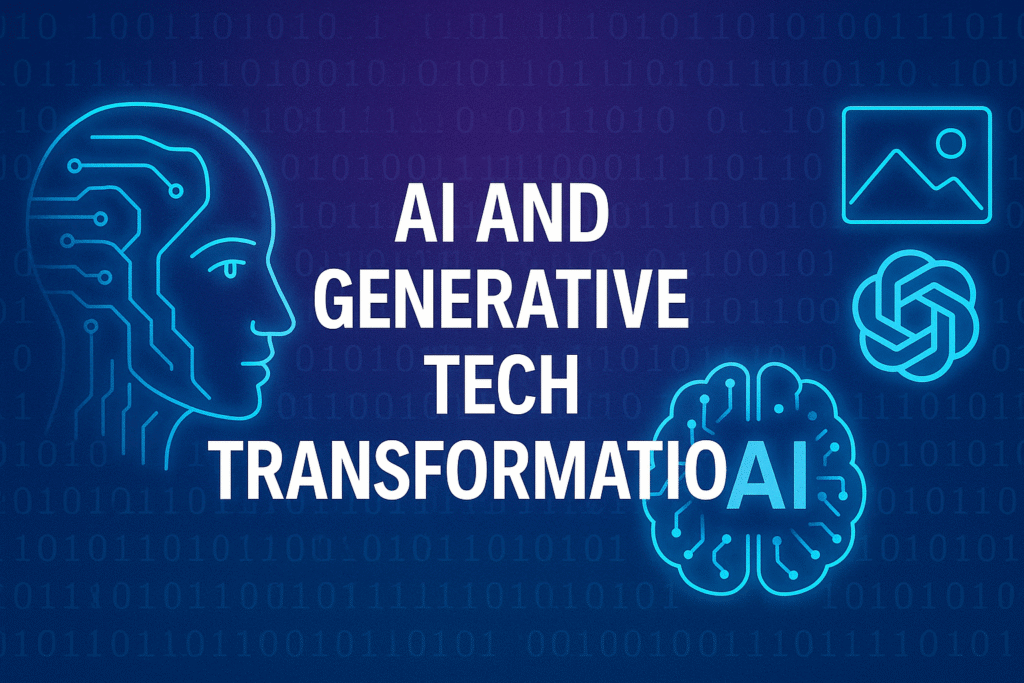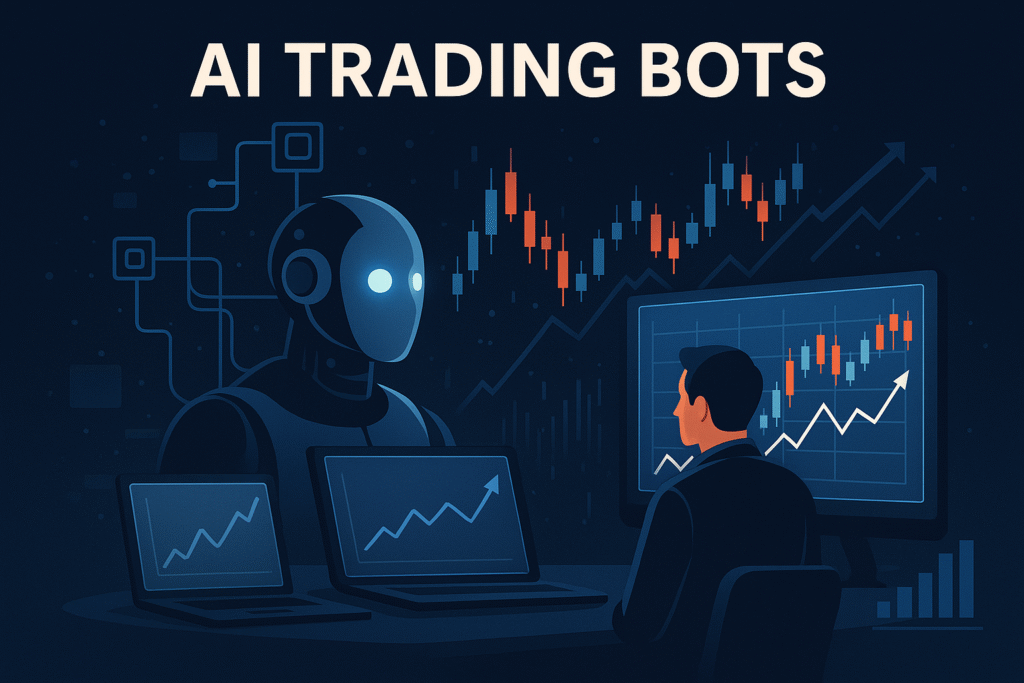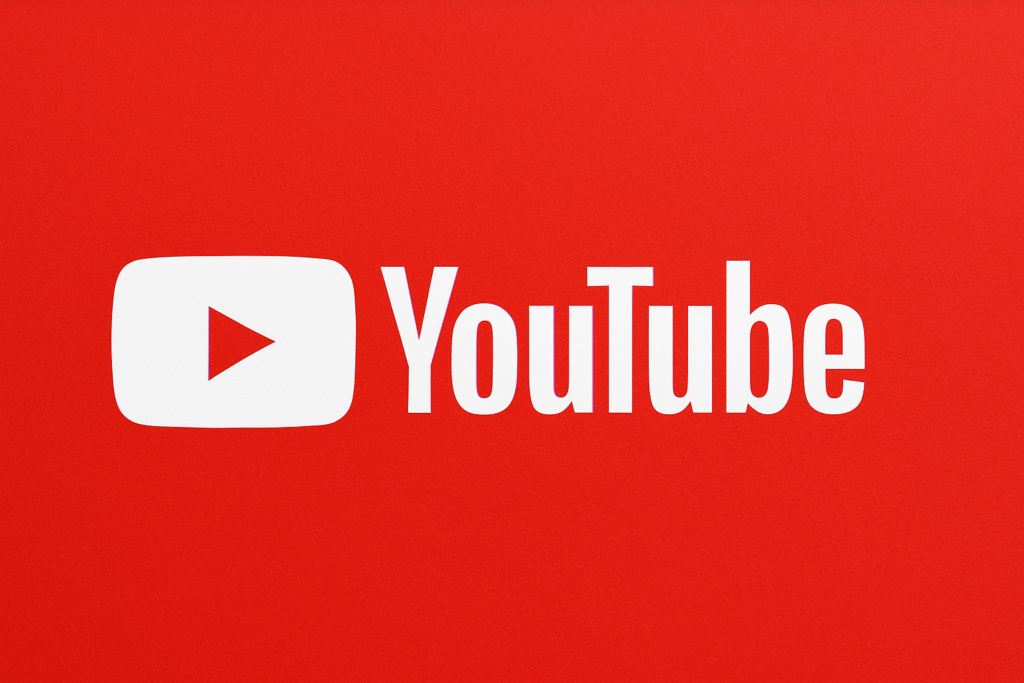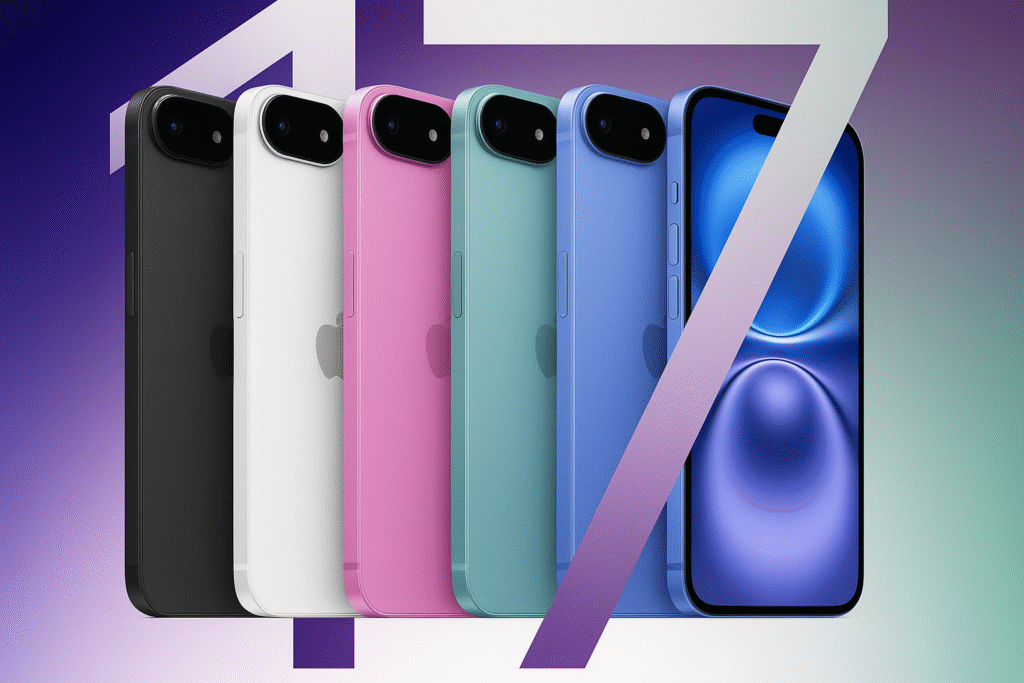
In 2025, Artificial Intelligence (AI) and Generative Technologies are not just passing ideas—they are the main forces changing how we live, work, and create new things. From chatbots that talk like humans to AI that can make code, art, music, and even new scientific ideas, the generative revolution is changing industries faster than ever before.
What is generative AI?
Generative AI includes systems like ChatGPT, DALL·E, Sora, and Midjourney that can make original content using a lot of data.
These models can create:
- Text (like articles, summaries, and emails)
- Images and videos
- Music and voiceovers
- Code and software
- 3D models and designs
The main idea behind this innovation is machine learning—especially large language models (LLMs) and diffusion models.
These let machines learn from human patterns and copy them in big amounts.
Generative AI is affecting almost every field around the world:
- Media & Content Creation
Journalists and marketers now use tools like Copy.
AI, ChatGPT, and RunwayML to make stories, headlines, social posts, and video summaries in just seconds. Traditional media companies are using AI in editing to speed things up and save money. - Healthcare & Medicine
AI is helping create fake medical data, improve disease diagnosis, and assist in finding new medicines.
Tools like DeepMind’s AlphaFold have changed how we predict protein structures, making it faster to develop vaccines and treatments. - Education
Students use AI tutors on platforms like Khanmigo and Socratic by Google.
Teachers use generative tools to make quizzes, summaries, and study plans tailored to each student. - Business & Productivity
Companies are using tools like Jasper, Notion AI, and GitHub Copilot to automate customer service, write documents, create code, and even draft legal contracts.
Startups can now build basic products in weeks instead of months.
A big change in 2025 is the rise of multimodal AI.
These are models that can both understand and create text, images, videos, and audio at the same time. Examples include OpenAI’s GPT-4o, Google’s Gemini, and Anthropic’s Claude. These models can take a spoken question, look at a picture, and give a summary—all in real time.
This has a lot of potential for:
- Customer service that feels more personal
- AI news anchors
- Video editors and podcasters
- Real-time learning tools
AI and humans working together—Not replacing each other, but making each other better
Even though some people worry that AI might take over jobs, the trend today is more about working together than competing.
Generative AI is like a co-pilot—helping humans be more creative and get more done instead of making them unnecessary.
Writers can get help with brainstorming and editing.
Designers can make prototypes quickly. Developers can code faster with AI tools. In fact, a report from McKinsey says generative AI could add up to $4. 4 trillion every year to the global economy by 2030.
🛡️ Challenges: Ethics, Deepfakes, and Regulation
This power comes with a lot of responsibility.
Deepfakes, fake information, job loss, and biased results are big worries. In 2025:
Governments are making rules for AI
Websites now have to mark content made by AI
Ethical generative AI design is becoming a bigger field, focusing on being open and fair
The Road Ahead
The next big step includes autonomous agents—AIs that can do whole tasks without being asked—being tested in areas like finance, online shopping, and space technology.
What’s next?
Generative hardware—special chips made for real-time creative work—and AI-native operating systems are being developed by companies like NVIDIA, OpenAI, and Apple.
Final Thoughts: Embrace the Transformation
We are at the start of a big change driven by generative AI.
Similar to the internet or electricity, this technology will change how we create and make decisions—from building products to making laws. Whether you’re a business owner, student, creator, or just someone who uses technology, it’s important to understand, use, and adjust to these changes.
The future isn’t just digital. It’s generative.
What is generative AI?
Generative AI refers to artificial intelligence models that can create new content—such as text, images, music, or code—based on patterns learned from large datasets. Examples include ChatGPT, Midjourney, and DALL·E.
How is generative AI different from traditional AI?
Traditional AI is designed to analyze and predict using existing data, while generative AI can actually produce original content, such as writing articles or designing images, based on learned patterns.
What are some real-world applications of generative AI?
Generative AI is used in content creation, customer service, education, software development, marketing, medical research, and product design.
Will AI replace human jobs?
While AI may automate repetitive tasks, it is also creating new opportunities. Most experts believe it will augment human work rather than fully replace it, especially in creative and strategic fields.
Are there risks to using generative AI?
Yes. Risks include misinformation, deepfakes, bias in outputs, and privacy concerns. That’s why responsible use, transparency, and regulation are essential.



